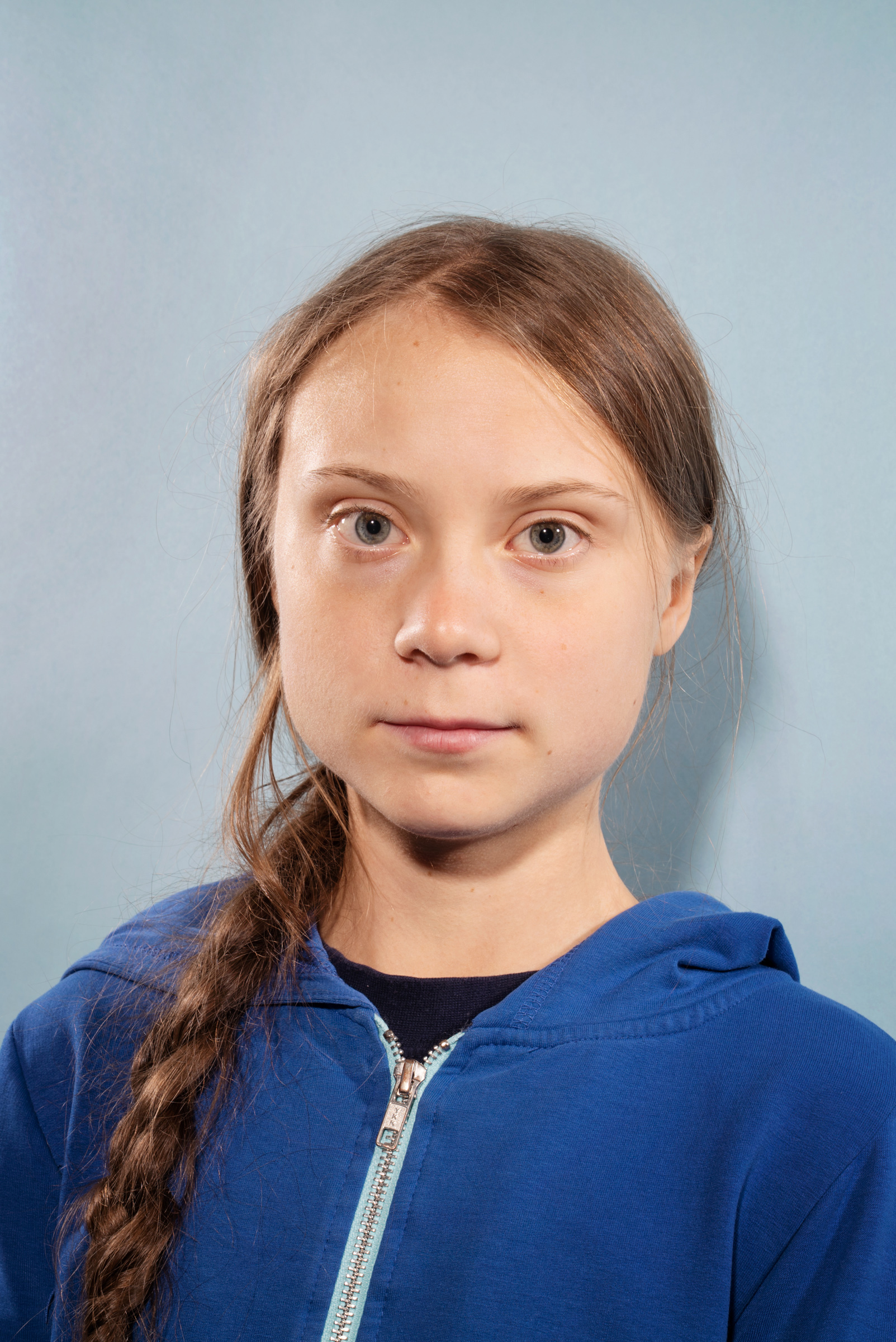This essay is adapted from the transcript of a radio program produced for Swedish Radio and broadcast in June. This is the first time the text has been published in its entirety.
Chapter 1: UN speech and New York
The first thing I see when I enter the United Nations Headquarters building in New York City is Roxy. My dog. The two of us are projected onto a large screen which apparently is part of an international art exhibition. When I see her brown labrador eyes it almost feels as if she was right here with me. Suddenly I’m reminded of how much I miss her.
Today is Sept. 23, 2019, and it’s now been 7 weeks since I boarded the train in Stockholm and began my journey. I have no clue of how and when I’m going to get back home. 3 weeks have passed since the boat Malizia sailed into New York City’s harbour and left the peaceful, constrained life on the ocean. After 14 days at sea we sailed past the Statue of Liberty, stepped ashore in Manhattan and took the red subway line uptown towards Central Park. My sea legs were shaking and all the impressions from people, scents, and noises became almost impossible to take in.
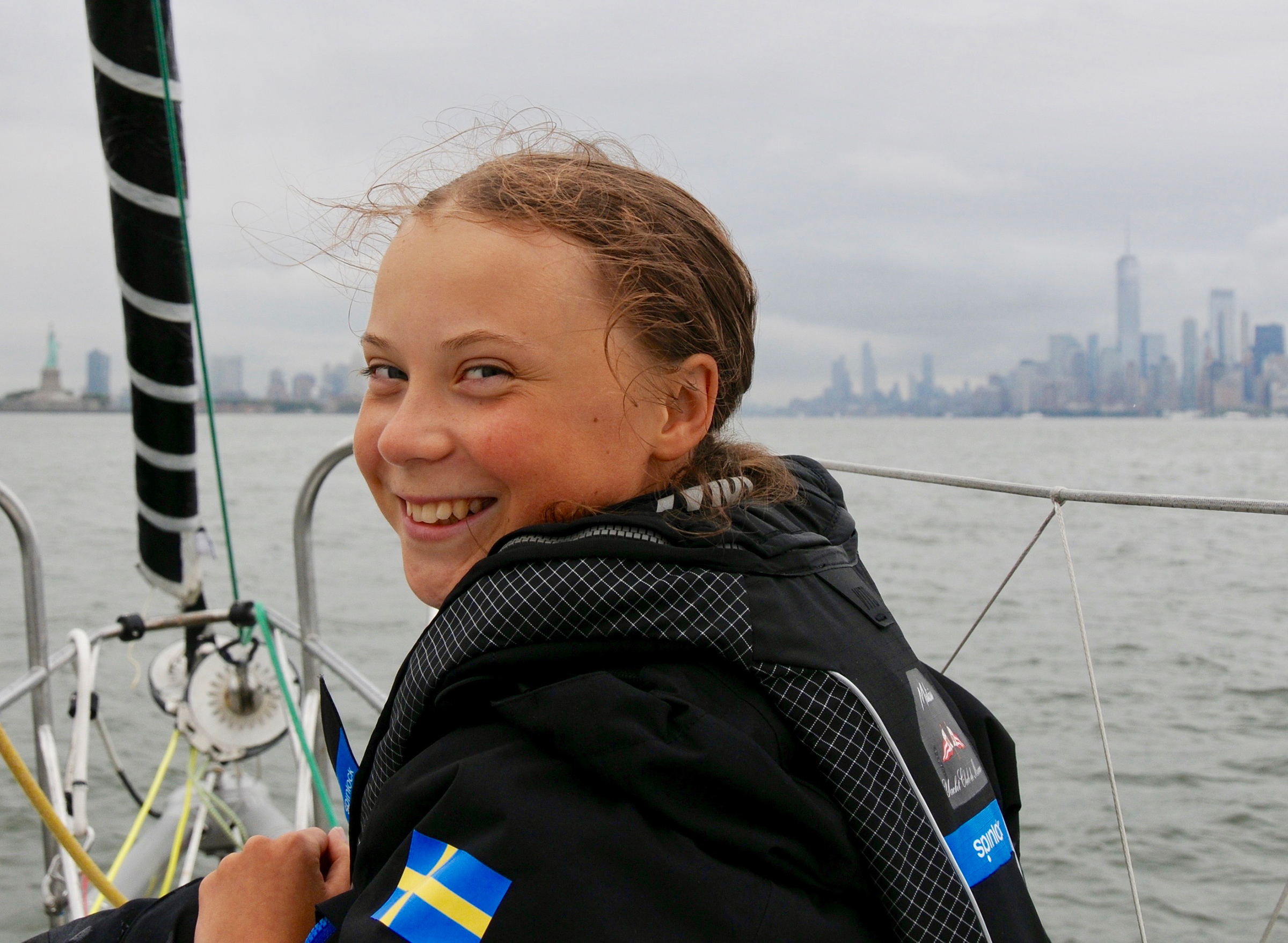
The time in New York has been surreal. If the media attention was big in Europe, it’s nothing compared to how it is here. A year ago the thought of seeing pictures of my dog inside the UN would have been unthinkable. Now it’s nothing strange at all. I see myself everywhere. Just the night before one of my speeches had been projected onto the facade of the UN building. But luckily I completely lack an interest in such things. If you would care about this kind of attention, then you’d probably develop a self-image that is far from sane.
It’s very hard to move inside the giant labyrinth of this building. Presidents, prime ministers, kings, and princesses, all come up to me to chat. People recognize me and suddenly see their opportunity to get a selfie which later they can post on their Instagram – with the caption #savetheplanet. Perhaps it makes them forget the shame of their generation letting all future generations down. I guess maybe it helps them to sleep at night.
In the greenroom, sitting with the other speakers, I try to read through my speech, but I constantly get interrupted by people who want to do small talk and take selfies. The UN Secretary General Antonio Guterres steps in. We chat for a bit, just like I’ve learnt that you’re supposed to do. I fill up my red water bottle and sit down again. Then it’s Chancellor Angela Merkel’s turn to come up, congratulate, take a picture and ask whether it’s ok for her to post it on social media. A queue starts forming. Jacinda Ardern, the prime minister of New Zealand, waits in line but doesn’t quite make it before it’s time for the event to start.
The annual UN General Assembly week in New York City is always a big global event, but this year it was a bit extra special since the secretary general had decided that the focus would be exclusively on the climate. The expectations are huge. It has been promoted as a ‘now-or-never’ moment.
Almost all of the world’s leaders are sitting in the audience, but it’s only those with specific so-called “solutions” who have received an invitation to address the General Assembly.
The event begins with a very ambitious digital sound- and lightshow. The volume is way too high. I’m standing by the backdrop covering my ears.
”We do not accept these odds.”
That is what the speech was about, if you read it in full. And it of course alludes to our remaining carbon budget. But the only message that seems to have resonated is ”how dare you?”.
I’ve never been angry in public. I’ve barely even been angry at home. But this time I’ve decided that I have to make the most out of the speech. To address the United Nations General Assembly is something you probably only get to do once in your lifetime. So this is it. I need to say things I will be able to stand by for the rest of my life, so that I won’t look back in 60-70 years from now and regret that I didn’t say enough, that I held back. So I choose to let my emotions take control.
On the subway home I see that many in the car around me are watching the speech on their phones. Some come forward to congratulate me. Someone suggests that we should celebrate. But I don’t understand what their congratulations are for, and I understand even less what we’re supposed to be celebrating.
Yet another meeting is over. And all that is left are empty words.
Chapter 2: Washington D.C.
Who is the adult in the room? That question has been asked over and over again during the last year. But this question reaches a whole new level when I end up standing in front of the food court in the U.S. House of Representatives in Washington, D.C. Fast food chains. Hamburgers, candy and ice cream stores. Dunkin Donuts. Baskin Robbins. Here you find the most powerful policymakers in the world sitting in their suits, while drinking pink milkshake, eating junk food and candy.
In the week leading up to the UN General Assembly meeting I spend a few days in the nation’s capital. I use the opportunity to do the kind of things you can do when in Washington D.C. Like visit museums, protest outside the White House, speak in the United States Congress, and stuff like that. But most of the time I meet with politicians.
It gets a bit repetitive after a while. But in a way it almost feels like coming home, since politicians are pretty much the same no matter where you are in the world.
I urge them to listen to the science and act now before it’s too late. They say that they think it’s so amazing that I’m so active and committed, and that when I grow up I too can become a politician and make a real difference in the world. I then explain that when I’ve grown up and finished my education it will be too late to act if we are to stay below the 1.5°C – or even 2°C – target. After that I talk through some of the figures and numbers from the Intergovernmental Panel on Climate Change (IPCC) 1.5°C report. Then they laugh nervously and start talking about something else.
A group of maybe 20 young climate activists gather inside the Speaker of the House Nancy Pelosi’s office. Our group mostly consists of representatives from indigenous peoples in North- and South America. From First Nation tribes and the Amazon rainforest.
On the wall hangs a big portrait of Abraham Lincoln. The atmosphere during the meeting is awkward at best. It is as if two entirely different worlds collide. Worlds separated by hundreds of years of injustices, structural and systematic racism, oppression and genocide.
At last a young activist asks to speak. Her name is Tokata Iron Eyes and she lives in Pine Ridge, an Indian reservation in South Dakota, one of the poorest and most socially vulnerable communities in the entire United States.
“How do you think it feels for us to sit here in this room with that man looking down from that painting?” she says and points to Abraham Lincoln.
Speaker Pelosi apologies if anyone has been offended but explains that he was a great man who has meant so much for their country.
“He wanted my people dead”, Tokata says. She’s referring to the executions of Dakota Indians ordered by Lincoln in 1862. “To sit here in this room with that painting… It’s just so difficult” she says.
I try to picture things from her perspective. We fight for climate justice, but how can any justice be achieved when the social and racial injustices have never been officially acknowledged in the public eye in so many parts of the world?
That same day I’m called to testify in the U.S. Congress. But it just feels wrong. What am I supposed to do or say there? I want the people in power to listen to the science, not to me. But after a lot of hesitation and consideration I figured out a way. I asked whether I could borrow a computer. I print out a copy of the IPCC’s 1.5°C report. I was ready to submit my testimony.
Afterwards I take the metro to Tenleytown and walk the 45 minute stroll to the house we’ve borrowed. The walk stretches through some of the most beautiful neighbourhoods you can possibly imagine. Every house is like a miniature castle straight out of a fairytale. Outside one of the biggest houses there’s a woman standing with her daughter, who is around the age of five. “It’s you!” the mother says when she sees me. “Can I take a picture of you together with my daughter?”
“Of course!” I answer.
When I walk away she turns facing the girl. “Greta is a climate activist, she explains. Maybe you’ll also become an activist when you grow up.” The mother says it in a way that makes climate activist appear as the most noble, cool thing in the world.
Like a mix between a ballerina, a president, and an astronaut.
Chapter 3: The science
My message is – and has always been – listen to the science, listen to the scientists.
“Which scientists?” you could of course argue. Within all scientific fields there’s a constant and never-ending debate. That’s what science is about. And climate crisis deniers and delayers love this angle. To spread doubt about whether there’s actually consensus on the scientific grounds of the climate crisis.
That argument can be used in almost all other issues, but it’s no longer possible to use here. The time for that has passed. The consensus is overwhelming. The debate around the global adoption and acceptance of the Paris Agreement and the IPCC reports is over. So what do those two things actually mean?
In Paris, the world’s governments committed themselves to keeping the global temperature rise to “well below 2°C”. But in the latest update from the IPCC – the SR1.5 report – scientists underline that 2°C is not a safe level. We have today already passed about 1.2°C of global heating, and in their report they instead stress the importance of limiting the warming to below 1.5°C. And that is to give us the best possible chance to avoid passing so-called tipping points, and start irreversible chain reactions beyond human control.
So where do we start? Well I’d suggest that we do precisely what all the world’s governments have committed to do in the Paris Agreement. Which is to follow the current best available science.
And that, among other places, we find on page 108, chapter 2 in the IPCC’s SR1.5 report. Right there it says that on Jan. 1 2018 we had 420 Gt CO2 left to emit globally to have a 66% chance of staying below the 1.5° target. We emit about 42 Gt CO2 every year, including land use such as forestry and agriculture. So today we’re soon already down to lower than 300 Gt of CO2 left to emit.
That is the equivalent of less than 7.5 years of today’s ‘business as usual’ emissions until that budget completely runs out. This is the carbon budget which gives us the best odds to achieve the 1.5° target. Yes, you heard it right, less than 7.5 years.
Do you remember the London Olympics? ‘Gangnam Style’ or the first Hunger Games movie? Those things all happened about seven or eight years ago. That’s the amount of time we are talking about.
But even these figures are very watered down. They include almost no tipping points or feedback loops, nor the global aspect of equity in the Paris Agreement, nor already locked-in warming hidden by toxic air pollution. Most IPCC scenarios also assume that future generations will be able to suck hundreds of billions of tonnes of CO2 out of the atmosphere with technologies that don’t exist on the scale required, and that very likely never will in time.
I will try to explain more about what these aspects mean later on. But if you read between the lines you realise that we are facing the need to make changes which are unprecedented in human history.
One reason why the climate and ecological crisis is so hard to communicate is that there’s no magical date when everything is beyond saving. You cannot predict how many people’s lives will be lost, or exactly how our societies will be affected. There are of course countless estimations and calculations which predict what could happen—one more catastrophic than the other—but they almost exclusively focus on a very limited area and almost never take into account the whole picture. We therefore must learn to read between the lines. Just like in any other emergency.
But these are at least the basics. Even if these figures are way too generous they are still the most reliable roadmap available today. They are what we should be referring to.
And the fact that the responsibility to communicate them falls on me and other children should be seen for exactly what it is – a failure beyond all imagination.
Chapter 4: Roadtrip
Three days after my speech in the UN I leave New York City. The last few days everything got a bit too much with all the people and the attention. It feels like a huge relief to move out of the house on the Upper West Side of Manhattan and say goodbye to our host for the last month.
I’ve taken a sabbatical year from school to be able to travel to Santiago de Chile, where the UN’s yearly climate conference, the COP 25, is going to be held. I have no idea how to get there, all I know is that, in order to reach Santiago in time, I’ve got to get to Los Angeles by November 1st. So now awaits 5 weeks of constant traveling. My dad and I leave Manhattan behind us and drive north in an electric car that we’ve borrowed from Arnold Schwarzenegger.
We travel through spectacular landscapes, past mountains, ravines, glaciers, prairies, deserts, swamps. We see the autumn coloured leaves of New England, the forests of Quebec, the lakes in Minnesota, buffalo herds in Wyoming, the redwood trees in Oregon, red rock formations in Arizona and the cotton fields of Alabama.
We switch between the radio stations. The choices are almost only Christian pop and country music. Most of the time it’s just the two of us, but sometimes we are accompanied by journalists or people we know.
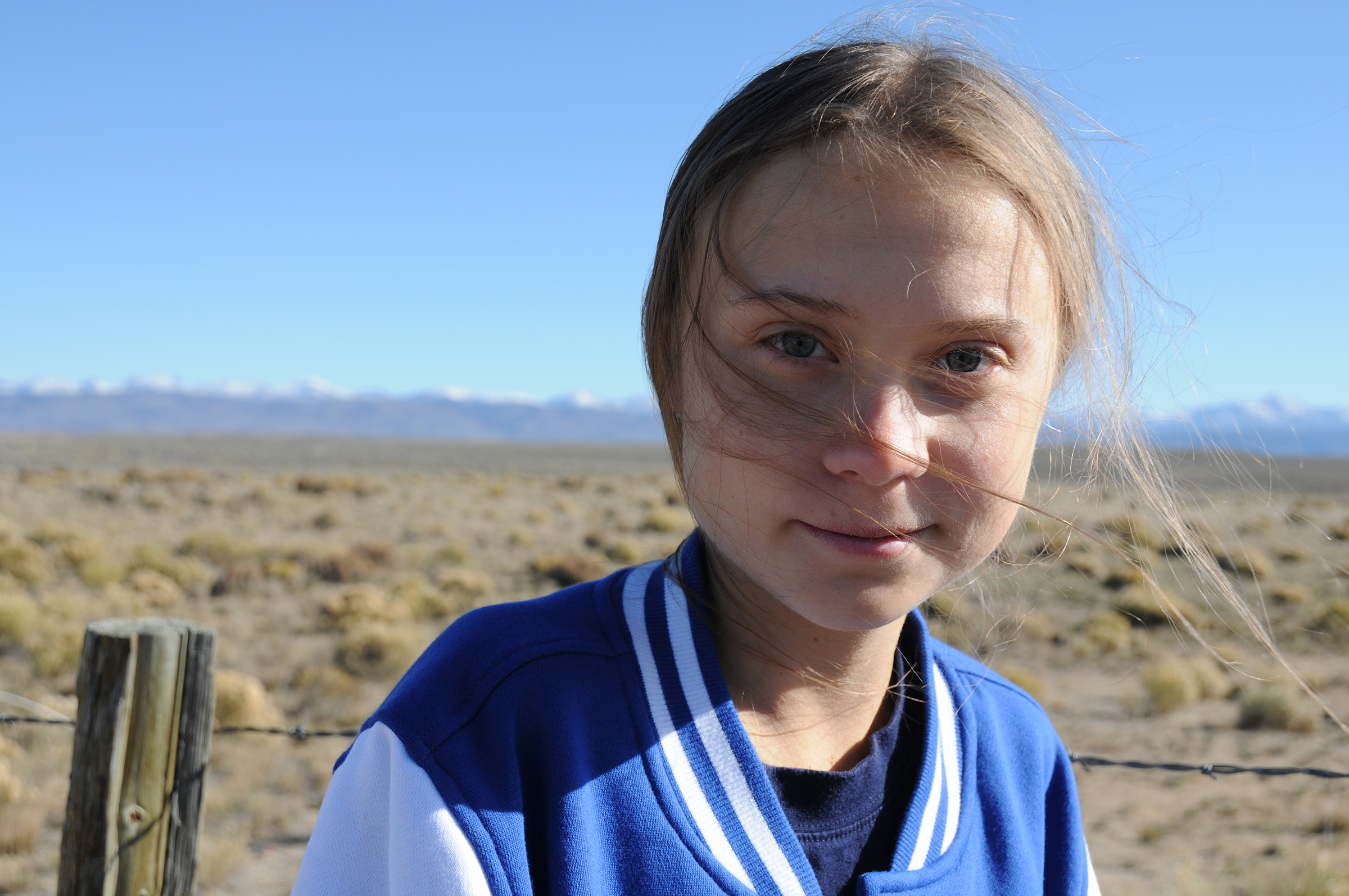
Every Friday I continue to strike wherever I find myself to be at that moment. Denver, Iowa City, Charlotte, Rapid City, Edmonton, Vancouver, Los Angeles. Everywhere lots of people show up, people of all ages. But nothing beats Montreal where half a million people came out on the streets.
In South Dakota we are stopped by a policeman. He looks just like a caricature from an American movie, with mirrored shades, cowboy hat and all. He asks us where we are going. I say Santiago. Then he asks if we’ve got any large amounts of “dollars, weapons or dead bodies in the car?” We answer no, and continue across the Missouri river, over the prairies, the Badlands and the Rocky Mountains.
While the car is charging we walk around the alleys of small towns, shopping malls, suburbs, petrol stations, farms, industrial and residential areas. Wherever I go, people come up to talk and take selfies.
We wake up at 7 a.m. and drive until we get tired in the evening. We buy food wherever there’s food to buy, but it’s not that easy when you’re on the road and you’re vegan. It ends up being mostly canned food, beans, french fries, bananas and bread.
During the nights we either sleep in motels or with people who open up their homes. Activists, scientists, authors, doctors, journalists, hippies, diplomats, movie stars, lawyers. We travel through 37 states in total. Every state has got a slogan on the cars’ license plates, but I make up my own. Like for instance:
North Carolina: Where not even the vegetarian salad bars have vegetarian options.
Alabama: Where the sunsets are pretty and the Christmas decorations are early.
Through the car window I can see the neverending coal trains in Nebraska and Montana, the oil wells in Colorado and California, abandoned factories in Indiana and Pennsylvania, 16-lane highways, endless parking lots and shopping malls, shopping malls, shopping malls. Through the tiny vents of big livestock trucks I look into the eyes of cows and pigs on their way to slaughterhouses.
I’m stunned by the economic differences and social injustices which in many ways are an affront to all forms of human decency. I’m outraged by the oppression targeting especially indigenous, Black and Hispanic communities.
Every twenty minutes or so we pass fields where seemingly endless amounts of brand new RVs, motorboats, quad bikes and tractors are lined up for sale. Along the highways you see giant billboards with anti-abortion, anti-evolution and anti-science campaigns.
At night time the sky is lit by countless oil refineries sparkling in the dark, from north to south, from coast to coast.
Apart from a few wind power plants and solar panels there are no signs whatsoever of any sustainable transition, despite this being the richest country in the world. The debate is far behind Europe. We’re discussing free public transport and circular economy – here they don’t even have public health care or pavements for pedestrians to walk on.
In a petrol station in Texas I count to over 40 different kinds of coffee. I try to add up the number of different sorts of soft drinks as well, but I lose count around 200.
An older man in a cowboy hat comes up to me.
“I’m a big fan,” he says, before he walks across the parking lot, steps inside his giant pickup truck and drives on down the highway.
Chapter 5: The beetle
The only place that anyone has ever discouraged me from visiting is Alberta, Canada. The state of Alberta is one of the western world’s largest oil producers and its main claim to fame is probably being home to the tar sands. The tar sands are an area bigger than the whole of England where oil companies have spent the last 60 years extracting oil straight from the soil. A process with a enormous ecological footprint.
Alberta has a very powerful and highly criticized oil lobby that is well known for its harsh methods to silence anyone they consider a threat to their industry. And I’m definitely considered a threat to them. On several occasions I need to call for police protection when the level of threats and the sheer harassments become too serious.
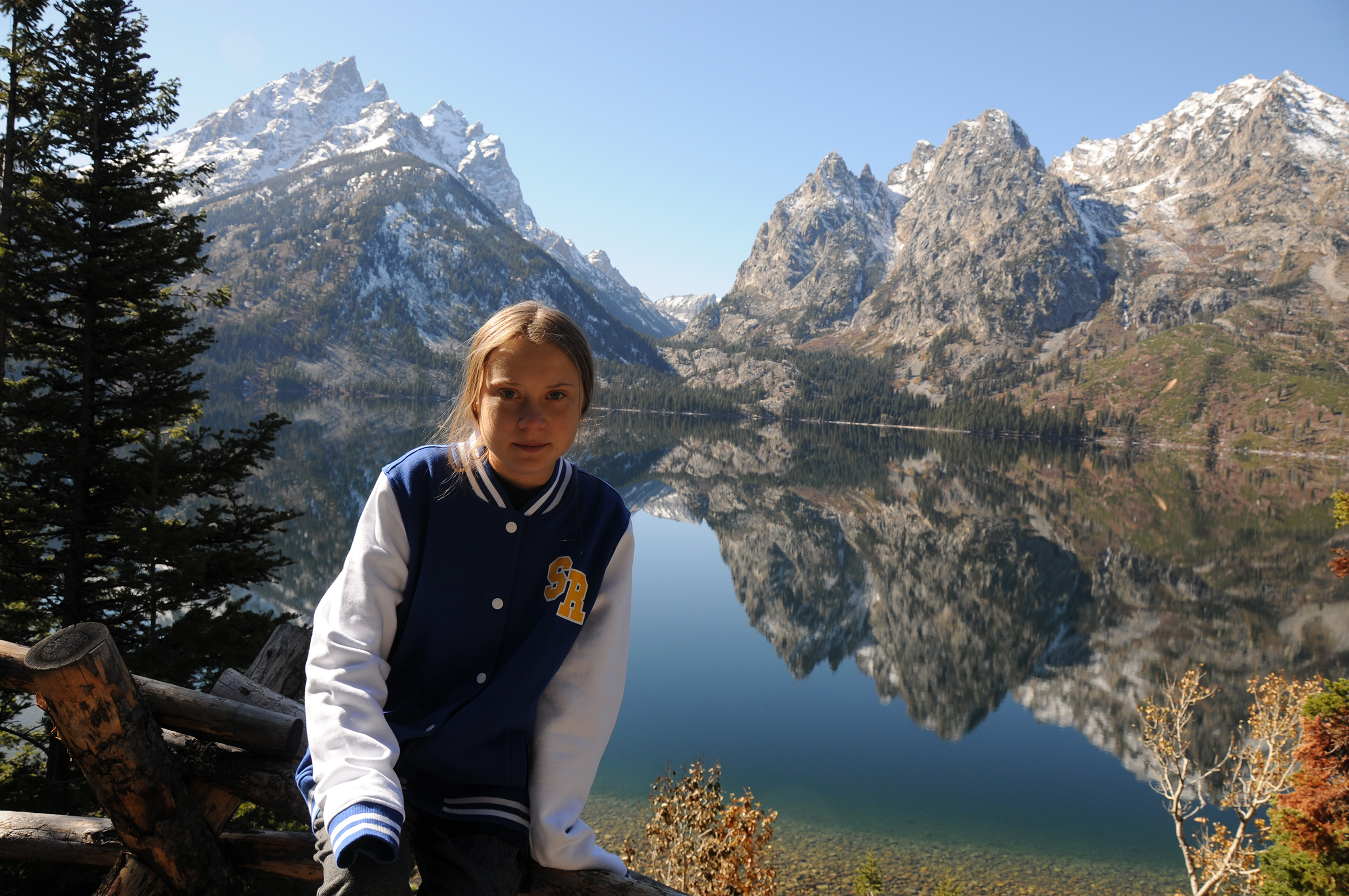
On the morning of Oct.21 I’m traveling through the spectacular Canadian landscapes with a film crew from the BBC, heading for the Jasper National Park. Magnificent pine forests stretching out as far as the eye can see. It reminds me of home. Except for the fact that many trees here aren’t green, their needles are either brown or have been lost entirely. It looks very strange. I assume they must be American larch trees, since those trees lose their needles in the autumn.
“No, unfortunately those aren’t Larch trees,” says the biologist Brenda Shepherd as she walks me round the national park. She shakes her head as she approaches one of the brown, pine trees and points to a hole through the bark. Though the hole seeps something that looks like solidified resin.
“Here you can see how the tree has tried to defend itself,” she says. “But it’s useless, it will soon be dead.”
How many trees in this area would you say are affected? I ask.
“About 50%.”
I can’t seem to get my head around what she just said. “50%?”
“Somewhere around there,” she says.
The term ”tipping point” can be hard to understand but this the most clear and obvious example that I that I have come across myself. The mountain pine beetle exists across the North American continent. Every winter the temperature here drops to very low levels. Much colder than in Sweden, for instance. And since only a very small percentage of this species survives in that temperature for a certain number of days, this has never been a problem in the past. But in the last few decades this area has seen a significant level of heating. Canada – as well as other countries close to the poles – has seen a rate of warming about twice as fast as the rest of the world.
So, the temperature rises and all of a sudden we find ourselves on the other side of an invisible border. Suddenly almost the entire population of this beetle survives the winter. And we have passed a tipping point. A point of no return which releases several so-called feedback loops: self-reinforcing, often irreversible, chain reactions. And since the local ecosystem completely lacks the ability to adjust to the new reality, the consequences become extremely visible.
Tree after tree is attacked by the mountain pine beetle and dies shortly thereafter.
Needles to say, the effects on the local environment are disastrous.
But, unfortunately, what happens in the Canadian Rockies doesn’t stay in the Canadian Rockies. These mechanisms are global.
Chapter 6: Tipping points
The day after my encounter with the mountain pine beetle, we have an appointment with the glaciologist John Pomeroy. His team of researchers from the University of Saskatchewan has offered to bring me up onto the Athabasca glacier.
Along the walk leading up to the glacier there are signs placed out by the side of the pathway. Every sign marks a certain year. John stops and points at one that says 1982. “That means that this is where the glacier began in that year.”
It looks quite strange as there is no sight of any nearby glacier whatsoever.
“It was around that time I started working here,” he continues. “Since then I have watched with my own eyes how the glacier has disappeared, meter by meter.”
Due to global heating the Athabasca glacier has, in the last 125 years, retreated 1.5 km and lost half its volume. According to the latest estimates, it’s currently withdrawing 5 metres every year.
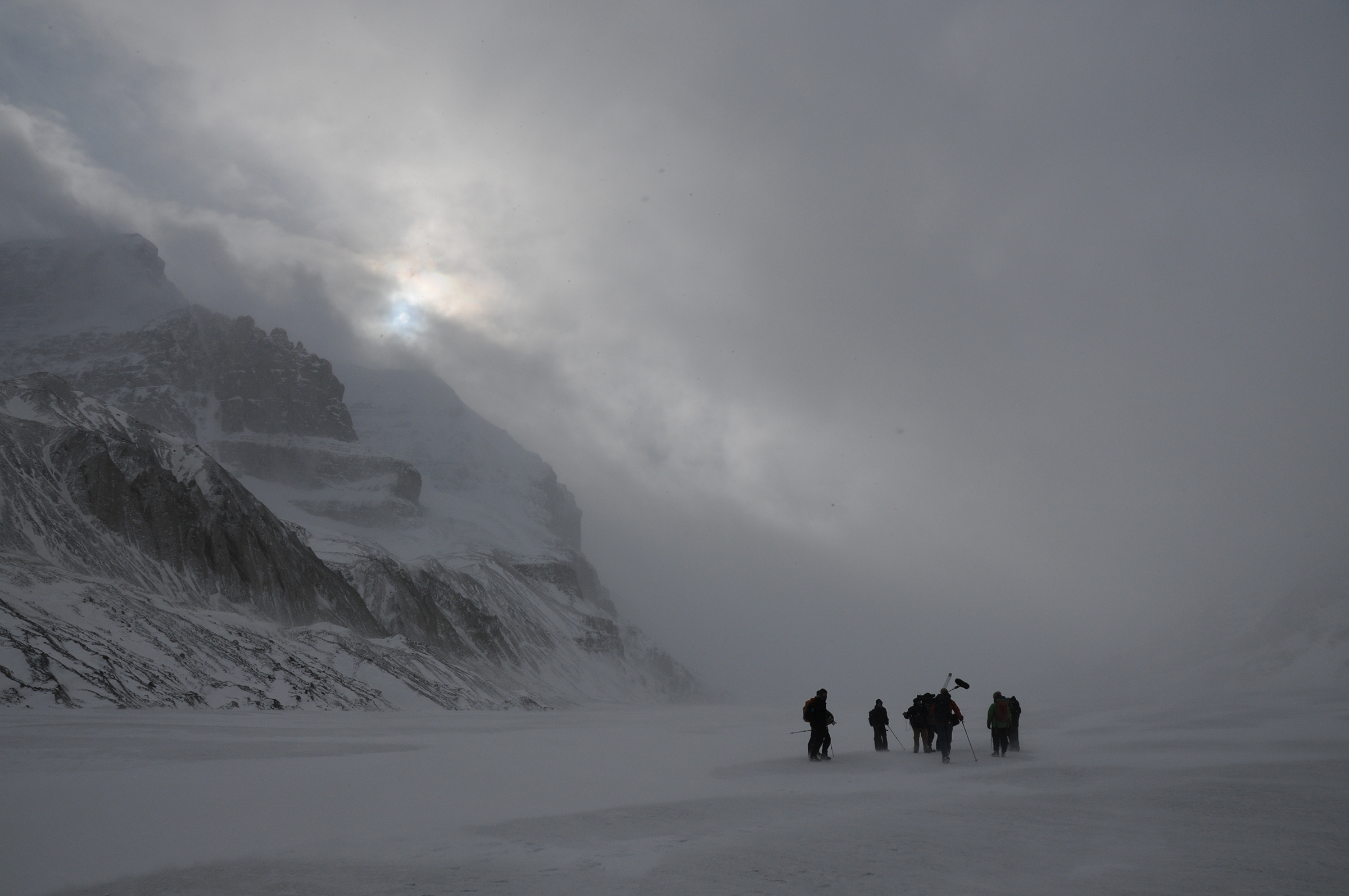
I was instructed to wear every piece of warm clothing that I have, since Katabatic winds – winds that form over glaciers – can be ruthless. And they weren’t exaggerating. Once we step onto the ice it gets almost impossible to move forward, let alone to stand up straight. There’s a heavy snowfall passing by, reminding us that the full force of the long Canadian winter is about to arrive any day now.
We struggle on in our borrowed boots, using ski poles to support our balance and weight. When we reach a place John considers good enough, he stops, takes off his backpack and starts unpacking his gear. He takes measurements while explaining the procedures step by step.
Then he starts chipping into the ice. He breaks off a piece and gives it to me.
“If you look carefully, you see it’s full of small black dots. That’s soot,” he says.
Where does the soot come from?, I ask.
“It’s from the wildfires that burn here every year. The woods lose a lot of their resilience to the fires as there are so many dead trees all over the forest that become like firewood.”
I realise he’s referring to the trees I saw yesterday.
“When there’s this much soot then the entire glacier turns grey,” he continues. “And since a dark surface absorbs more heat than a white one, it means the glacier will melt even faster. It’s a feedback loop. A part of a chain reaction.”
I ask whether this glacier can be saved or not. He shakes his head.
“No, this one has already passed its tipping point and there’s nothing we can do. We estimate that it – along with countless other glaciers – will be gone completely within this century. The world’s glaciers are called the third polar ice cap. Imagine all the people that depend on these glaciers as their source of drinking water. And as if that wasn’t enough, we have now gotten used to – and built our infrastructure around a very high water flow, since the melting process obviously has been way higher than it normally is. That will make it even harder for us to adjust when it starts to run dry.”
How many people are relying on the glaciers in this area for their drinking water, I ask.
“The entire western North America,” he replies. “But the same process is happening all over the world. The Andes, The Alps. And above all in Asia, where up to 2 billion people depend on the natural melting process of the glaciers in Himalaya for their very survival.”
So, in short: the temperature increases, the damaging mountain pine beetle survives the winter and dramatically increases in population. The trees die and turn into wildfire fuel which intensifies the wildfires even further. The soot from those fires makes the surface of the glaciers turn darker and the melting process speeds up even faster.
This is a textbook example of a reinforcing chain reaction, which in itself is just a small part of a much larger holistic pattern connected to our emissions of greenhouse gases.
There are countless other tipping points and chain reactions. Some have not yet happened. And some are very much a reality already today. Such as the release of methane due to thawing permafrost or other phenomena linked to deforestation, dying coral reefs, weakening or changing ocean currents, algae growing on the Antarctic ice, increasing ocean temperatures, changes in monsoon patterns and so on.
Another overlooked factor is the already built in additional warming hidden by life threatening air pollution, this means that once we stop burning fossil fuels we can expect to see an already locked in warming, perhaps as high as 0.5-1.1°C.
It’s all part of an infinite chain of events that constantly trigger and create new events. And new events. And new events. There just doesn’t seem to be an end.
Chapter 7: Paradise
The wall is completely covered by posters. Each one contains a photo of an animal. Dogs, cats, bunnies. On each and every one there is a big headline that spells out the word MISSING. A handful has FOUND handwritten across the picture, but the vast majority remain MISSING.
The wall belongs to the local primary school in the town of Paradise, California. On Nov. 8, 2018 Paradise was almost completely destroyed by a devastating wildfire. The pictures on the school wall represent all the pets that went missing in the fire. This wall became a place where the owners collectively displayed their last hope of finding their pets alive. But, needless to say, most of the animals remain MISSING.
The fire in Paradise destroyed almost 19,000 buildings. 85 people lost their lives, if you exclude other causes of death after the fire. Before the fire 27, 000 people lived in Paradise. Today that number is down to around 2000. The town became a symbol of how climate breakdown is affecting us in the global north already today.
California has always had a natural fire season, just like Australia, Brazil and many other places. But over recent years that season has grown considerably longer and the fires have become more frequent and devastating. Higher temperatures, less rainfall and stronger winds are some of the changing factors that together make up for a deadly combination when it comes to wildfires.
Walking around in Paradise is almost like being in a ghost town. I’m here with the BBC to talk to one of the survivors of the 2018 fire. He guides us around the area that used to be his neighborhood. He points at empty spaces and tells us what used to be there. Houses and gardens in the lush, green outskirts of town.
“That was a car,” he says and points to a lump of metal, lying on a burnt out driveway. The temperature in the fire sometimes got so high that cars started to melt. Suddenly he stops.
“This used to be my house.” He looks at an open field as if there still was a house standing there. It’s almost as if he’s hallucinating, since all that is left is a mailbox and the remains of power lines and sewage pipes, sticking out of the red soil.
The fact that the climate crisis is already affecting people today is hardly something new. Even though it would sometimes seem like it, judging by the ongoing discourse.
We often hear that we need to act for the sake of our children. That the future living conditions will get significantly worsened unless we act now. And that is of course true. But it seems like we keep forgetting that large numbers of people around the world are dying already today. And when I say that I’m not primarily talking about in places like California.
The ones who are and will be hit the hardest are the same as in most other crises. The poorest and the most vulnerable. Those who are already suffering from other injustices. Namely, people in developing countries, and above all women and children. Since they are the ones with the least resources, living in the most vulnerable parts of the global society.
The UN predicts that by the year 2050 there will be up to 1 billion climate refugees in the world. I wonder, what will it take for us to start facing these issues and begin to ask the uncomfortable questions?
In Sweden we live our lives as if we had 4.2 planet earths. Our annual carbon footprint is approximately 11 tonnes of CO2 per person, if we include consumption. That can be compared to India’s 1.7 tonnes per capita. Or Kenyas 0.3 tonnes.
On average the CO2 emissions from one single Swede annually is the equivalent of 110 people from Mali in West Africa. So if there is any truth to the claim – popular in Western societies – that quote ”there are too many people in the world” then wouldn’t that only refer to ourselves, living extremely high carbon lifestyles in the global north? And not the vast majority of the global population who are already living within the planetary boundaries.
But my experience from all such arguments is that they are only used to seek further excuses to go on living the unsustainable life that we consider to be our right.
The climate and sustainability crisis is not a fair crisis. The ones who’ll be hit hardest from its consequences are often the ones who have done the least to cause the problem in the first place.
The global aspect of equity and climate justice make up the very heart of the Paris Agreement. Developed countries have signed up to lead the way.
And this is so that people in developing countries can have a chance to raise their living standards and to build some of the infrastructure that we in the industrialized world already have. Such as roads, hospitals, schools, electricity, sewage systems and clean drinking water.
After our visit to Paradise we get back in the car and head towards the coast. We have been offered a stay for the night in a small house in a vineyard. But suddenly the phone rings and we find out that the entire vineyard has burnt to the ground in the wildfires currently raging through the California wine districts.
We drive on towards San Francisco. As the evening falls the night sky turns red and you can feel the smoke from the fires in your nose.
Chapter 8: Media
“Wait, let me just record the interview.”
The journalist grabs his iPhone out of the pocket of his way-too-thin coat. It is a cloudy, freezing day on Mynttorget in the old town of central Stockholm. But just like any other Friday a few dozen others and I have gathered here to stand outside and protest in front of the Swedish parliament. It does get a bit chilly standing there for 7 hours straight in a few windy degrees below zero.
He presses record and holds up the phone towards me.
“So, why are you striking?” he asks.
I’m striking for us to take the climate crisis seriously and treat it like a crisis.
“Yes, but what do you want the politicians to do?”
I want them to listen to and act on the science, do what they have promised to do in the Paris Agreement and treat the crisis like a crisis.
I can tell that I haven’t given him the answers he wanted.
“Yes, but what specifically?”
When I then start talking about carbon budgets he gives up and interrupts. He knows very well he won’t be able to use anything of what I’m now saying in his article. People want something simple and concrete, and they want me to be naive, angry, childish and emotional. That is the story that sells and creates the most clicks.
“But uh,” he continues, “how are we going to solve this climate issue?”
Just the fact that this question is asked to me – a teenager – over and over is absurd. But not as absurd as the fact that the climate- and ecological emergency is being reduced to a “problem” that needs to be “fixed”. That it is seen as an “important topic” among other “important topics”.
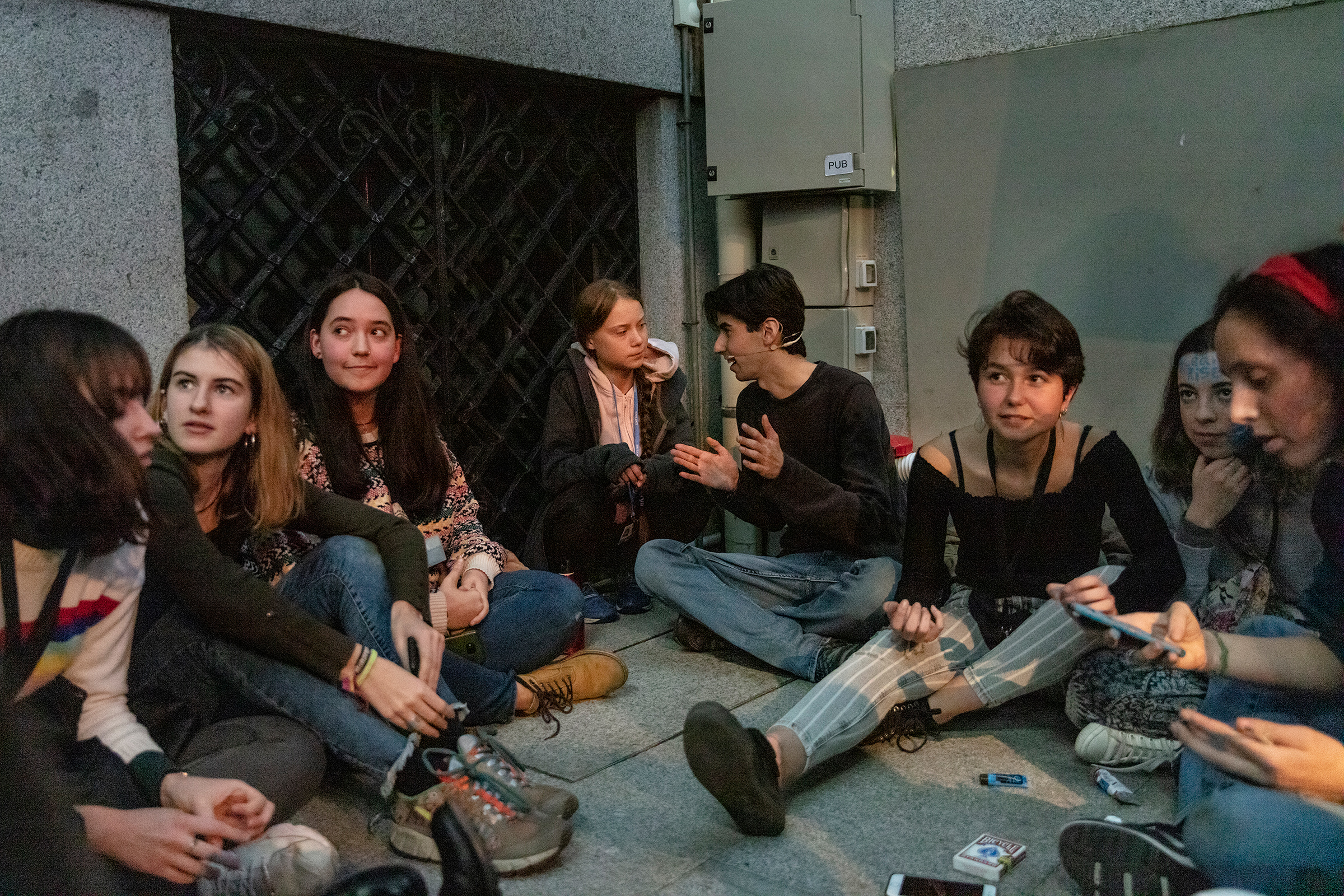
Of course I don’t know how we are going to solve the climate crisis. The fact is that no one knows. There is no magic invention or political plan that will solve everything. Because how do you solve a crisis? How do you solve a war? How do you solve a pandemic without a vaccine?
The only way is to treat the climate crisis like you would treat any other crisis. To come together, gather all the experts, put other things aside and adapt to the new reality. To act as quickly and strongly as the situation allows.
If for instance there’s no vaccine available for a disease you invest all possible resources into developing one as soon as possible, while at the same time taking all other possible measures as well. In a crisis you act even if you don’t know exactly how you are going to solve the problem. In a crisis there’s no time to wait for specific answers and details. Because the answers have to be found along the way. In a crisis you need to put all cards on the table and think long term and holistically. The climate crisis doesn’t have a vaccine. We have to admit that we don’t know how we are going to solve it. Because if we would have known then it wouldn’t have been a crisis in the first place.
There are many who claim that people understand but repress the full meaning of the climate crisis, because the message is too depressing and difficult to handle. That would mean that we continue to do what we do, despite being fully aware of the devastating consequences of our actions. But that I refuse to believe, since this would mean that we humans are evil.
My experience however is that people understand much less about the climate crisis than you’d think. If there’s anything I’ve learnt from traveling around the world it is that the level of knowledge and awareness is close to nonexistent.
I’ve met many of the most powerful people in the world. And even among them pretty much everyone lacks even some of the most basic knowledge. So if people are not aware, who is guilty for the message not getting through?
The reporter on Mynttorget is running out of time, he knows his phone’s battery won’t last much longer in the cold.
“But who really is Greta?” he asks. “I think people want to know Greta.”
I’m not important, I answer. This has got nothing to do with me. I’m completely uninteresting. I’m not doing this because I want to become famous or popular or get followers on social media.
“I’m doing this simply because no one else is doing anything.”
Chapter 9: Crossing the Atlantic
It’s six o’clock in the morning on Nov. 13, 2019. The TV monitors in the hotel lobby in Hampton, Virginia are showing weather warnings on repeat. Giant storm patterns are raging along the entire North American east coast, from Florida to Nova Scotia.
We step inside the car with the tiny luggage we’ve got left. It’s pitch black outside and the car is still freezing. Rob Liddell, a documentarian with the BBC, and sailor Nikki Henderson are sitting in the back. Nikki scrolls through the latest weather updates on her phone. Rob has got the camera on his shoulder and is looking at us through the lens.
It’s dead silent inside the car. The only thing you hear is Nikki sighing and moaning over and over again. After what feels like an eternity she shakes her head, puts the phone down and goes “wow guys, we’re in for a rough ride”.
“But we’re still going, right?” my dad asks, a bit worried.
“Of course,” she says.
Rob tries to ask me questions to get some kind of interview going, but I’m not really in the right mood.
One hour later we cast off from the dock. We clear the harbor entrance heading for Chesapeake Bay and wave goodbye to all the people and TV crews who have gathered on the surrounding docks. There’s a strong wind coming from Northwest. On deck the freezing temperatures of last night have turned all puddles into thick layers of ice. It’s snowing. We set sail and head for the open sea. Towards the lighthouse. Towards the ocean. Towards Europe. Towards Portugal. Towards Stockholm Central Station.
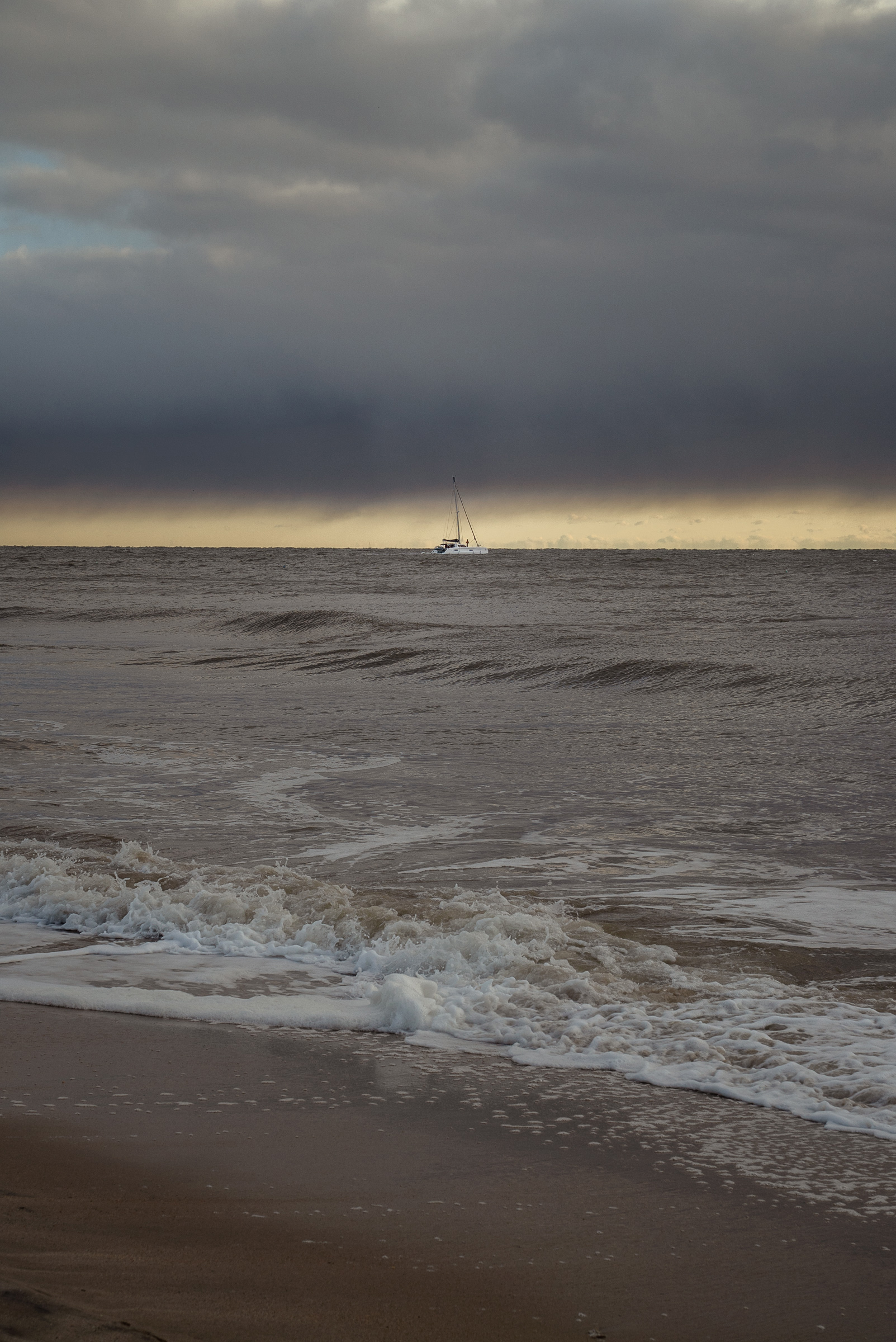
You do not sail across the North Atlantic ocean in November. At the end of September the storms come, and then the season closes until spring. Of course I had not planned for it to be like this. But the UN COP25 summit, where I was headed, was suddenly moved from Santiago to Madrid, meaning I had traveled halfway across the globe in the wrong direction. I had to find a solution.
I consider every possible option. Zeppelin airships, solar powered airplane and even sailing across the Pacific Ocean and then taking the Trans Siberian railway home. The most likely outcome however is to stay somewhere in North America for the winter.
Hundreds of people get in touch and want to help, but very few actually have something concrete to offer. The French and Spanish governments reach out and assure that they are going to help me find a way. However it is very unclear how they will do that.
Two Nordic airlines email and offer to arrange a flight using “50% sustainable fuel and then use the remaining 50% on another flight so that in total it becomes 100% fossil free”. As if biofuels were sustainable.
If I wouldn’t have been who I am I would probably have hitched a ride on a cargo ship, since they – unlike airplanes and cruise ships – don’t depend on paying passengers.
But everything I do and say gets altered and turned upside down which leads to mockery, conspiracy theories and organised hate campaigns. Which in turn leads to death threats toward me and my family. And that build up of hate and threat is much riskier than all the storms in the world.
Then suddenly one night in a hotel room in Savannah, Georgia, the phone beeps. It is Riley and Eleyna, a couple of young Australian YouTubers who are reaching out. They’re living on their catamaran with their one year-old son Lenny and are sailing around in the world, with no planned route. They offer to take us to Europe.
On the boat, we steer south so that in a certain amount of time we will have put ourselves in a strategically safe position away from a storm, so that we later can safely get to another position to avoid the next big storm. And then the next one, and the next one, and the next one. The low pressure systems sweeping over the North Atlantic right now are enormous. During the days we have gusts reaching up to 60 knots, and some nights the electric storms are so immense that you can see sparks in the water. We store all electronic devices in the oven to avoid them getting destroyed by lightning.
We are completely in the hands of the meteorologists helping us, sending weather updates and recommendations a few times a day. We’re very lucky to also have Nikki, a professional sailor, onboard. One hundred nautical miles in the wrong position can be the difference between life and death this time of year with this boat. You simply have to blindly trust data and the experts.
Me, my dad, Nikki, Elayna, Riley and Lenny are alone in the middle of the Atlantic Ocean. We are at the mercy of nature and have to act accordingly. We need to be able to take care of ourselves if something goes wrong.
If you are one week away from the nearest harbour you do not take any unnecessary risks. You don’t for instance start a fire on deck if you feel cold, you don’t throw away limited provisions of food or necessary equipment out in the ocean. You keep a constant watchful eye on the horizon and you don’t allow yourself to get struck by hubris. Onboard we are guided by common sense, the same common sense that should exist everywhere.
We are a civilisation isolated in the middle of the universe. Space is our ocean and the planet is our boat. Our one and only boat.
Chapter 10: Greenwashing
So what should we do to avoid a climate disaster beyond human control?
That is the question of our time. It is being asked by people all across the political spectrum from all over the world.
But what if the question to a great extent has been phrased the wrong way? What if it should rather be “what should we stop doing to avoid a climate disaster”?
This year – 2020 – the emission curve must be bent steeply downwards if we are to still have even a small chance of achieving the goals world leaders have agreed to. And then it’s of course not going to be enough with a temporary and coincidental reduction of greenhouse gas emissions where the purpose has been to stop a pandemic.
A common misconception about the climate crisis is that people think we need to reduce our emissions. But the fact is that if we are to keep the promise of the Paris Agreement, a reduction won’t be enough. We then need to reach a full stop of emissions within a couple of decades, and then quickly move on to negative figures.
There are generally three ways of reducing emissions – apart from the most obvious, to replace current fossil energy with renewables, such as solar and wind.
Number one is technical solutions. Techniques where you capture and store CO2 at the emitting source or directly out of the air. The problem here however is that the emissions need to drastically reduce now, and these techniques won’t exist at even close to scale in the foreseeable future. These plants are still prototypes. Believe me, I’ve myself visited two of the leading facilities in the world.
The second alternative is to use nature’s own ability to absorb and store carbon, which today often gets mistaken for only planting trees. Despite the fact that the most efficient way most often is to just leave the forests and natural habitats be in the first place.
A forest area the size of a football field is being cut down every second, according to Global Forest Watch. That is every second of every hour of every day. No tree planting in the world could compensate for that. And even if we miraculously decided to shut down the entire forestry industry and use all the available space in the world to plant trees, that still would only compensate for a few years’ emissions at current rates.
The third option is the only method that is available at scale already today. And that is to simply stop doing certain things. But it is also the alternative which people seem to find the most unrealistic. Just the thought of us being in a crisis that we cannot buy, build or invest our way out of seems to create some kind of collective mental short circuit.
Then there’s of course a fourth way of doing it. And this is the procedure that undoubtedly has been the most successful one so far, when it comes to reducing emissions. And it is so-called “creative accounting”. To simply refrain from reporting the emissions, or move them somewhere else. To systematically sweep things under the carpet, lie, and blame someone else.
My own country Sweden is a textbook example. In our case this strategy means that over half our emissions simply don’t exist on paper.
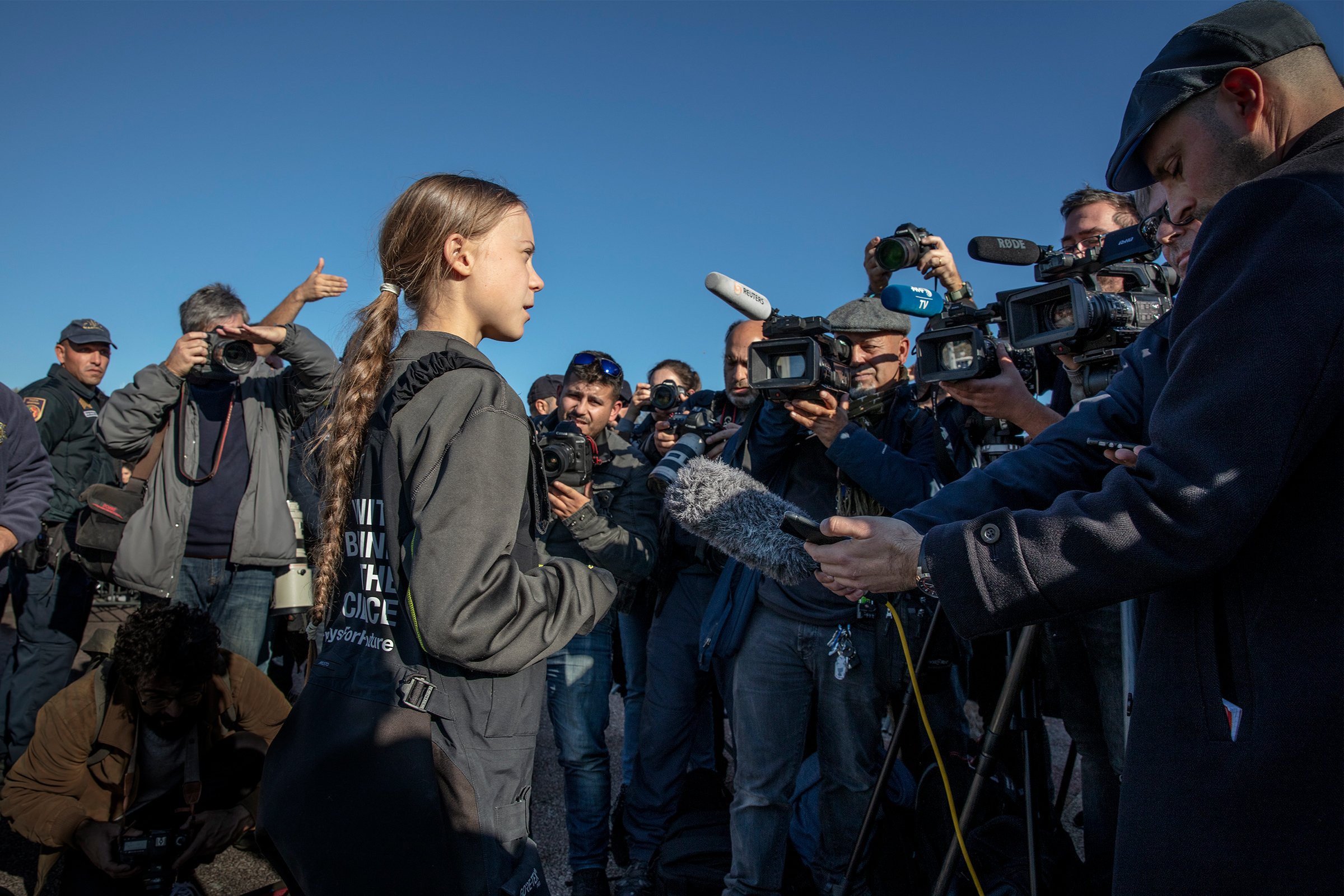
Year after year people in power are allowed to appear in the media unchallenged and claim that Sweden’s emissions of greenhouse gases have decreased 20-30% since 1990. But the truth is that they haven’t decreased at all, if you include consumption and international aviation and shipping. And obviously the statistics will look much better if you simply choose not to count everything.
But this is not unique to Sweden. The same approach is being used by pretty much everyone in the richer part of the world. Whether it being the EU, individual countries, states, cities or companies.
We have simply moved our factories to different parts of the world where the labour is cheaper – and by doing so we also moved a significant part of our emissions overseas. And of course this is a very convenient solution for the global north, but since the biosphere doesn’t care about neither borders nor empty words, it doesn’t work as well in reality.
But the real problem is that when it comes to the climate- and ecological emergency the people in power can today say basically whatever they want. They are practically guaranteed to not receive any follow up questions.
The issue of nuclear power is still for example allowed to dominate the entire climate debate, even though science has concluded that it can – at best – only be a very risky, expensive and small part of a much larger holistic solution.
You can claim that we can achieve impossible results through so-called green investments, without having to explain how it will be done, or what the term “green” even means. Words like green, sustainable, ’net zero’, ‘environmentally friendly’, organic, ‘climate neutral’ and ‘fossil free’ are today so misused and watered down that they have pretty much lost all their meaning. They can imply everything from deforestation to aviation, meat- and car industries.
And basically because the general level of public awareness is so low you can still get away with anything. No one is held accountable. It’s like a game. Whoever is best at packaging and selling their message wins. And since the truth is uncomfortable, unpopular and unprofitable, the truth doesn’t stand much of a chance.
Moral, truth, long term- and holistic thinking seem to mean nothing to us. The emperors are naked. Every single one. It turns out our whole society is just one big nudist party.
Chapter 11: Corona pandemic
Last year when I visited Davos I slept in a tent in 18° below zero. This year the organisers said that for security reasons I had to stay in a hotel.
The night before the conference starts I catch the flu. So it was quite a relief that I wasn’t sleeping in a tent. I have to cancel most scheduled events, which is something I actually don’t mind at all, since I find social gatherings and meetings that don’t lead anywhere mostly just being a waste of time.
So my stay is quite relaxing, but today I’m supposed to drag myself out the door for a meeting with the president of Switzerland. After that I’m going to go public with my plans about traveling to China. I’ve just received the official invitation to address the World Economic Forum conference which will most likely be held in Shenzhen, China sometime in the beginning of June. Visiting China is something I’ve wanted to do for a long time, and now it’s finally about to happen, that is, if the Chinese government will let me inside the country.
But just as I’m about to walk out the door the Swiss president cancels, as she had to immediately go back to Zürich to attend an emergency meeting. Apparently developments around the new virus discovered in China are causing grave concern.
That was my first introduction to the coronavirus crisis. I immediately put my plans of visiting China on hold. It seemed to become less and less possible to travel there sometime this spring. Instead I start planning to follow up on some other invitations, to take the Trans Siberian railway via Vladivostok to South Korea and Japan. But as the situation escalates I of course have to abandon these plans as well.
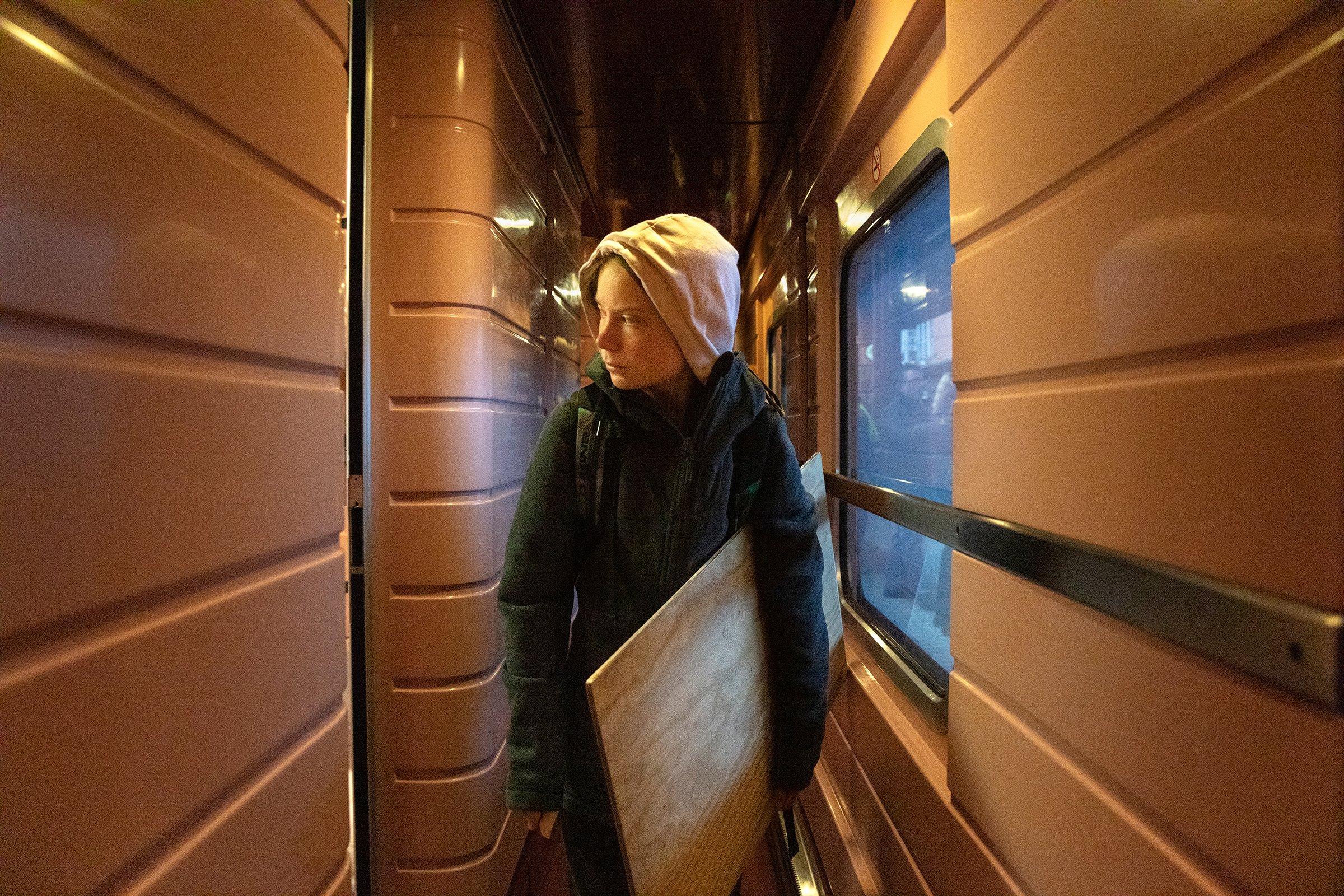
So I use the upcoming weeks to travel around in Europe, continuing to work on the documentary together with the BBC. We visit Jokkmokk, London, Yorkshire, Zürich and the European parliament. I strike in Hamburg, Bristol and Brussels. It’s the beginning of March 2020 and the world is just about to be turned completely upside down. This weekend there are supposed to be big climate strikes in France. But right here a tipping point is passed. What was unquestionable the week before has now suddenly become unthinkable.
In the Fridays For Future movement we decide to cancel everything, without hesitation. People are dying. Many are losing their family members, loved ones as well as their economic stability. The consequences of this pandemic are catastrophic. A crisis is a crisis, and in a crisis we all have to take a few steps back and act for the greater good of each other and our society. In a crisis you adapt and change your behaviour. And indeed, this is what the world does, at record speed.
So what was it that made these global structural changes possible in just a matter of hours?
Was it hope and inspiration that made us act so quickly during the corona pandemic? Something that most communication experts and news editors have claimed to be the only way forward to create change. Or was it perhaps something else?
There’s nothing positive about the corona crisis from a climate perspective. The changes made in our daily lives due to COVID-19 have extremely little similarity with the action needed for the climate.
The corona tragedy of course has no long term positive effects on the climate, apart from one thing only: namely the insight into how you should perceive and treat an emergency. Because during the corona crisis we suddenly act with necessary force.
International emergency meetings take place on a daily basis. Astronomical financial bailouts magically appear out of nowhere. Canceled events and tough restrictions make people change their behaviour and approach overnight.
The media completely transitions, puts other things on hold and almost exclusively reports about COVID-19, with daily press conferences and live coverage 24/7. All parts of society come together and politicians put their different views aside and cooperate for the greater good of everyone. Well – maybe not everyone and everywhere.
But broadly speaking, people in power from politics, business and finance are suddenly saying that they will do whatever it takes since “you can not put a price on a human life”.
Those words and this treatment of the crisis opens up a whole new dimension. Because you see, every year at least 7 million people die from illnesses related to air pollution, according to the WHO. Those are apparently people whose lives we can put a price on. Since they die from the wrong causes, and in the wrong parts of the world.
During the corona pandemic policy makers repeat that we have to “listen to the science and the experts”. Well, according to the world’s leading scientists and experts on biodiversity, the pandemic is likely to be followed by deadlier and more destructive diseases unless we halt the ceaseless destruction of natural habitats.
But these are not the scientists and experts they are referring to. Because long term sustainability doesn’t fit inside today’s economic and political systems.
Chapter 12: Hope
In the aftermath of the corona crisis there are many who claim that we need to use this as an opportunity. That when we restart the economy we must adopt a so-called “green recovery plan”. And of course it’s incredibly important that we invest our assets in sustainable projects, renewable energy, technical solutions and research. But we must not for one second believe that it will be even close to what is actually required. Or for that matter that the so called targets set out today would be ambitious enough.
If all countries were to actually go through with the emission reductions they have set as goals, we would still be heading for a catastrophic global temperature rise of at least 3-4 degrees. The people in power today have thus practically already given up on the possibility of handing over a decent future for coming generations. Given up without even trying.
It sounds terrible, I know. But in reality it is actually even worse. Because even if they want to act in line with what is needed – which actually sometimes is the case – they can’t. And that is because we are stuck in already written contracts and business agreements.
It’s just simple math.
The United Nations Production Gap Report shows that the world’s planned fossil fuel production alone by the year 2030 accounts for 120% more than what would be consistent with the 1.5°C target. It just doesn’t add up.
So if we are to avoid a climate catastrophe we have to make it possible to tear up contracts and abandon existing deals and agreements, on a scale we can’t even begin to imagine today.
And that alone requires a whole new way of thinking. Since those type of actions are not politically, economically or legally possible today. The climate- and ecological crisis can not be solved within today’s political and economic systems. That is no longer an opinion. That’s a fact.
I understand that all of this sounds uncomfortable and depressing. And I fully get why you as a politician or news editor choose to look away. But you must also realise that for us who actually have to live with the consequences for the rest of our lives, that’s a luxury that we can’t afford.
Recently a new scientific report was published by scientists from Uppsala University and the Tyndall Centre in the UK. It shows that if rich countries like Sweden and the UK are to fulfill their commitments to the Paris Agreement’s well-below 2°C target they need to reduce their total national emissions of CO2 by 12-15% every year, starting now.
Of course there’s no “green recovery plan” or “deal” in the world that alone would be able to achieve such emission cuts. And that’s why the whole “green deal” debate ironically risks doing more harm than good, as it sends a signal that the changes needed are possible within today’s societies. As if we could somehow solve a crisis without treating it like a crisis. A lot may have happened in the last two years, but the changes and level of awareness required are still nowhere in sight.
Things may look dark and hopeless, but I’m telling you there is hope. And that hope comes from the people, from democracy, from you. From the people who more and more themselves are starting to realize the absurdity of the situation. The hope does not come from politics, business or finance. And that’s not because politicians or businesspeople are evil. But because what is needed right now simply seems to be too uncomfortable, unpopular and unprofitable.
Public opinion is what runs the free world, and the public opinion necessary is today nonexisting, the level of knowledge is too low.
But there are signs of change, of awakening. Just take the metoo movement, blacklivesmatter or the schoolstrike movement for instance. It’s all interconnected. We have passed a social tipping point, we can no longer look away from what our society has been ignoring for so long. Whether it is sustainability, equality, or justice.
From a sustainability point of view all political and economic systems have failed. But humanity has not yet failed. The climate and ecological emergency is not primarily a political crisis. It is an existential crisis, completely based on scientific facts.
The evidence is there. The numbers are there. We cannot get away from that fact. Nature doesn’t bargain and you cannot compromise with the laws of physics. And either we accept and understand the reality as it is, or we don’t. Either we go on as a civilisation or we don’t.
Doing our best is no longer good enough. We must now do the seemingly impossible. And that is up to you and me. Because no one else will do it for us.
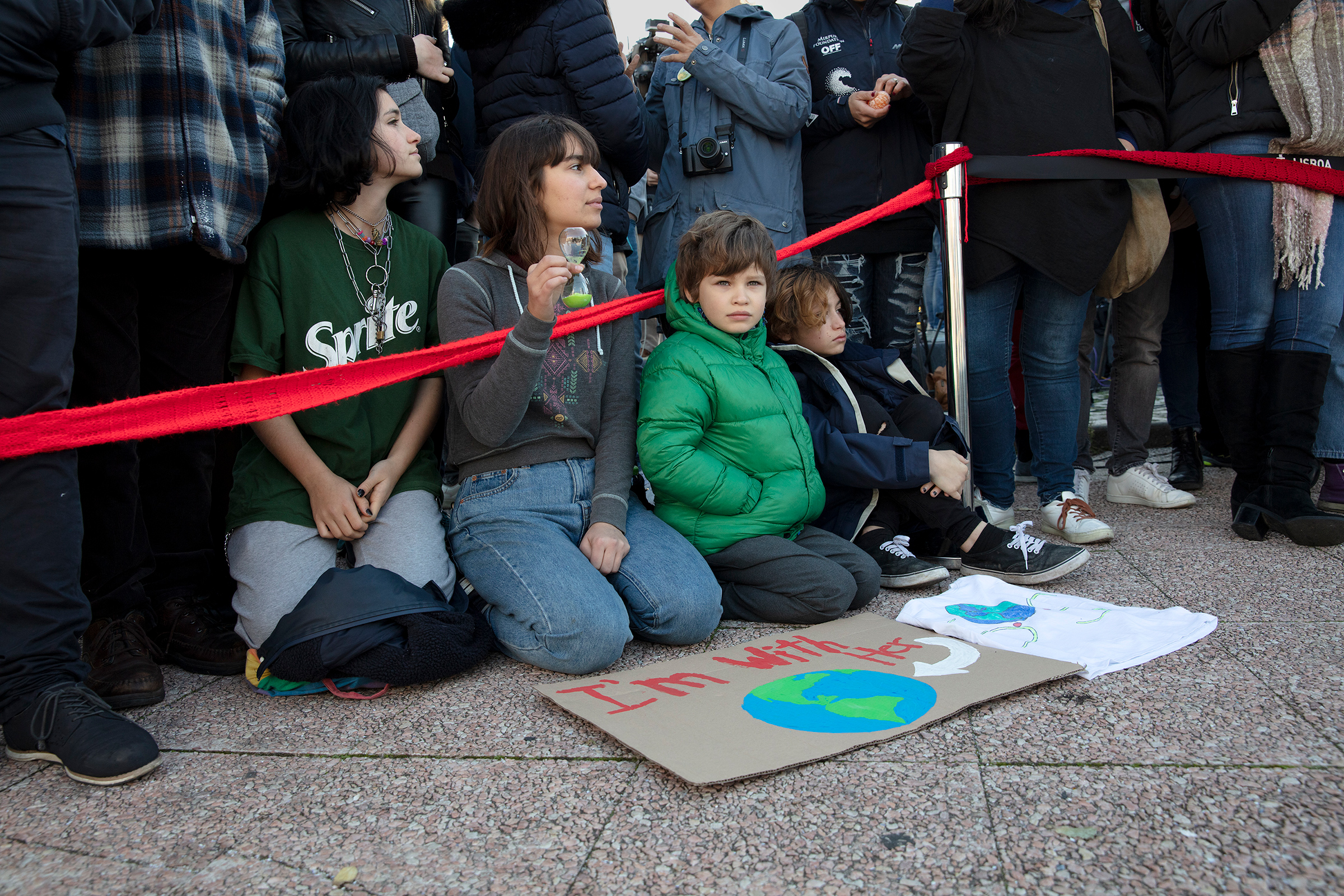
More Must-Reads From TIME
- The 100 Most Influential People of 2024
- Coco Gauff Is Playing for Herself Now
- Scenes From Pro-Palestinian Encampments Across U.S. Universities
- 6 Compliments That Land Every Time
- If You're Dating Right Now , You're Brave: Column
- The AI That Could Heal a Divided Internet
- Fallout Is a Brilliant Model for the Future of Video Game Adaptations
- Want Weekly Recs on What to Watch, Read, and More? Sign Up for Worth Your Time
Contact us at letters@time.com
